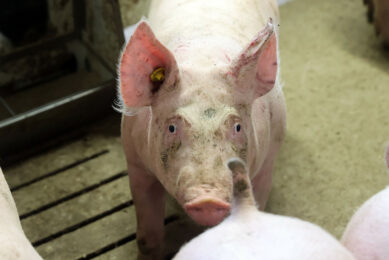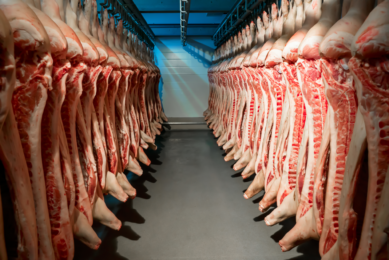H1N1, PRRS and IPVS: a day in the life
How busy can the life of a professional swine veterinarian be? Dr Ernest Sanford is swine specialist at Boehringer Ingelheim’s Vetmedica division in Ontario, Canada – and apart from that he is IPVS president, organising the next congress in Vancouver, BC. On top of that, H1N1 asks some attention…
5.30 am: The clock-radio comes on. I head down to my home office, turn on the computer to get my first blast of emails, browse the pig-related©websites I visit for daily updates. One e-mail from a colleague immediately catches my eye. She’s asking if we should cancel our trip next week for a meeting in Cancún, Mexico, because of the human swine flu cases being reported. We have a four-day meeting planned for Cancún in one week and the news of the influenza outbreak in Mexico broke over the last 48 hours.
My immediate response is that the cases so far seem to be mostly in Mexico City, more than 1,000 km from Cancún and (at that time), only a small number of more than 25 million people living in Mexico City (and >110 million people in Mexico) seem to be involved. Anyway, I said the meeting organisers would likely communicate with us before the day is out whether the meeting is on or not. A few hours later we do hear.
Meeting is moved from Cancún to Vancouver, British Columbia, Canada (48 hours later the meeting is called off with a new date and location to be determined for some time in the summer).
AASV conference call
I get through about a dozen e-mails, mostly from Europe, where they have been up for several hours already and a few from Asia where the workday is already over. I settle down to finish off a report on meetings I attended in Manitoba last week. That leaves me just enough time to prepare for a conference call of the Board of Directors (BOD) of the American Association of Swine Veterinarians (AASV) scheduled for 7am to update and discuss the developing H1N1 influenza (swine flu) story coming out of Mexico, which has already spread to several states in the US and several Canadian provinces.
The AASV conference call is very informative and quickly brings us up to date on several activities surrounding the H1N1 virus, including that researchers at the NADC (National Animal Disease Center) in Ames, Iowa have received some of the H1N1 virus from California and will be inoculating pigs later that day to see if it does infect pigs, and assuming it does infect pigs (we all expect it will) to determine its nasal shedding capabilities, transmissibility and whether pigs would be protected by the current commercially available vaccines.
No pigs infected
We also learn that no pigs in the USA or Mexico, or for that matter anywhere in the world are known to be infected with this new virus. During the call, the director for AASV district 10 (Mexico) informs us that unlike the reports of more than 150 deaths due to the virus in Mexico, actually 70-80% of those deaths are due to regular routine seasonal influenza and only 20 deaths have been confirmed due to the new H1N1 virus.
The remaining cases were due to pneumonia and other respiratory illnesses unrelated to any influenza virus, new or seasonal. He also reports that consumption of pork in Mexico had dropped 30-40% in just 24-48 hours and the pig price to producers had dropped by 20-25%.
Conference call is over; e-mails and phone messages have been piling up during the conference call. One message is about a herd that’s experiencing a PRRS outbreak in pigs in a wean-to-finish barn that might be reducing the efficacy of PCV2 vaccine to a level below that which had previously been experienced.
I call the veterinarian and schedule a farm visit for later in the week.
IPVS logo
Now on to a Skype conference call. This one is for laying out a media plan for the international media that will be attending IPVS 2010 in Vancouver and finalising details on handling IPVS 2010 logo shirts. Our order of IPVS logo shirts has run into a snag. The ladies white shirts are semi-transparent and unacceptable. We have to exchange these shirts for a different colour that is more opaque.
It’s now late morning. I’ve got to prepare for a team meeting at 2pm to discuss PRRS virus eradication in a multi-site production system. Lunch will have to wait. Well, maybe not, I do have time to take a Caesar salad and still get some work done before taking off for the afternoon farm team meeting.
Multi-site system
The meeting is scheduled for 2pm in the herd veterinarian’s office about 65 km away. The co-owners of the multi-site system are present along with the herd veterinarians. We lay out the plan for eradication emphasizing that we have the knowledge and tools to eradicate PRRS virus from individual herds, but it takes great attention to detail and absolute commitment to the plan by everyone in the system to stick to the biosecurity measures for the effort to be successful.
The meeting lasts just over two hours. The owners have to think it through and make some hard decisions. I drive back to the office to deal with more e-mails, phone messages and the day’s correspondence that I hadn’t gotten to yet. There are also more reports to complete and replies to emails and phone messages. I go over an IPVS hotel contract that has been revised, sign it and fax it back to our conference organiser to get it documented and returned to the hotel.
Catching colleagues
It’s evening now, my wife has been baby-sitting our four-year-old grandson (grandchild #5). He runs into my office to show me his latest creation. Although its evening for me it’s just mid to late afternoon across Western Canada. I can still catch several colleagues out west to return phone calls and e-mails for another few hours as they are from one to three hours behind my time and hence still accessible before closing down for the night.
Finally, I’ll read parts of a few journals before calling it a day…











